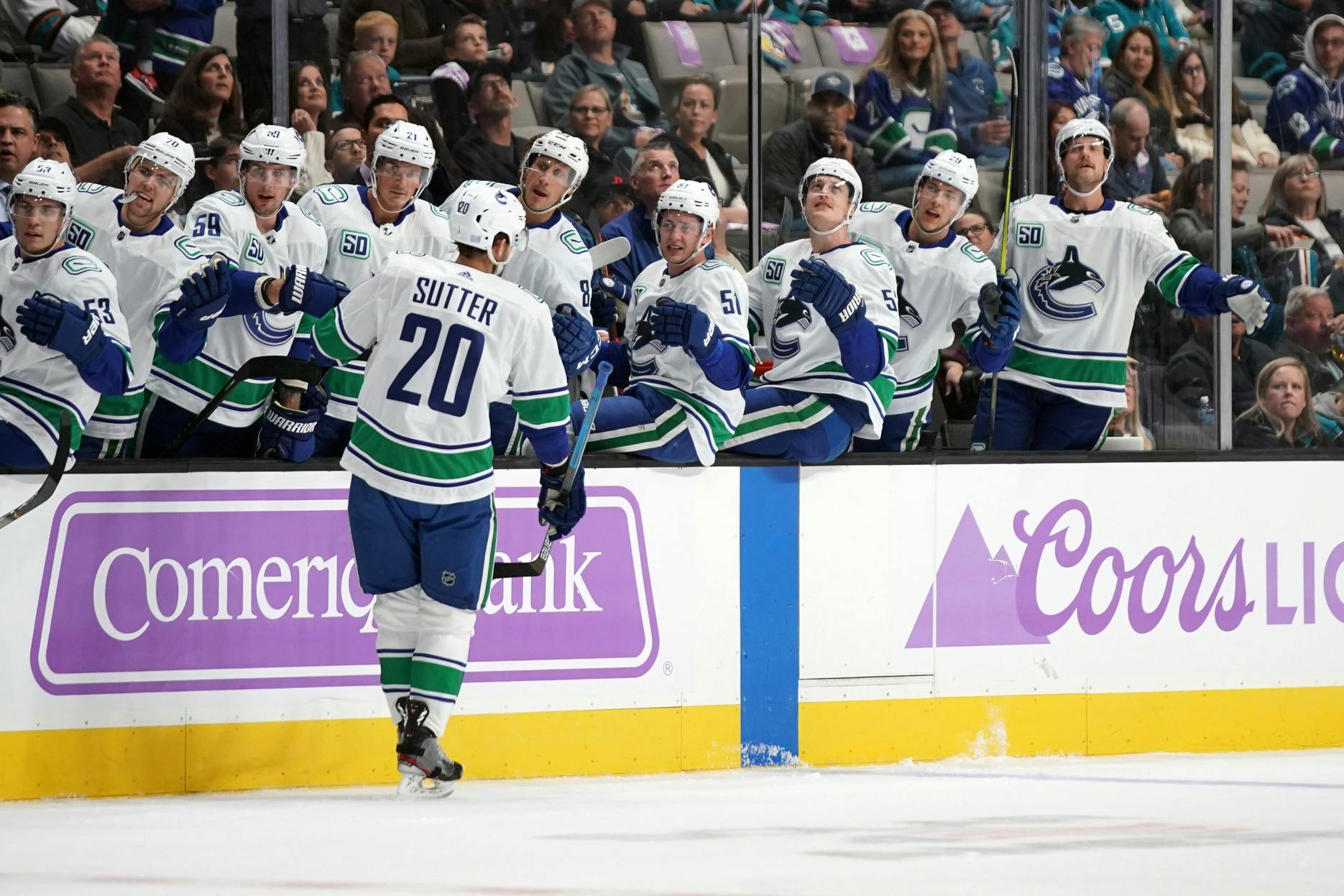Till contract do us part: Looking at how the Canucks’ bottom six fared against the Wild

By Jason Jhutti
3 years agoThe Notorious B.I.G. once said, “the mo’ money you make, the mo’ problems you get.” Who knew he was talking about the Vancouver Canucks’ bottom six?
With a flat cap of 81.5 million for next year and possibly for years to come, the Canucks’ bottom six forward group could become the team’s achilles heel if things don’t change.
The organization is closer to the end of Eriksson, Sutter, and Beagle’s contracts, which take up roughly $13 million on the cap.
In a pandemic world, it will be rather tough to get rid of these contracts since teams won’t be as willing to take on extra money for no reason unless a real sweetener is in the package. Meaning guys like Gaudette or Hoglander would be the names that other teams call for, which should be met with a big NO.
The organization can’t sacrifice the future to make way for a bottom-six that they overpaid for. Thomas Drance said the following on Wednesday morning on TSN1040:
‘There’s a considerable cap allocations issue, considerable roster construction issue among the Canucks’ bottom-six forward group. They were the worst bottom-six forward group in the league last season. They improved a bit this season but were well below average in terms of goal differential.’
It’s impossible to see how the Canucks can use this upcoming offseason as a chance to improve their roster aside from the internal natural development of players like Elias Pettersson and Quinn Hughes. The goal is to improve year to year, and as of now, the team isn’t a real threat to challenge for the Stanley Cup, and should be looking to change that, especially with their best players on ELC’s for one more season.
But now let’s look at the Canucks’ bottom six. It was up and down for them in the series against the Wild.
Game 1
The Canucks couldn’t muster up any quality offence against the Wild in their opening game of the qualifying round. The hard suffocating forecheck of the Wild held the Canucks to 28 shots mostly from the blue line and took away any high danger chances. However, providing offence isn’t the main focus for the bottom six. Sound defensive play inserts energy that can give a jolt throughout the lineup and wear down the other team, but that wasn’t the case in the team’s first playoff game in 5 years.
Their performance in game one was dreadful.
In fact, a few of the bottom six players that the Canucks rely on so heavily to kill penalties not only took penalties themselves, but it was on the man advantage that the Wild scored two of their three goals.
Game 2
After a lacklustre performance in game one, the lineup had to be changed, and that is exactly what Travis Green did.
An injury to winger Tyler Toffoli forced Green to shake things up throughout his lineup for game two against the Wild.
What looked like a slow third line of Roussel Sutter and Ferland didn’t do much. Ferland left the game after playing just 2:36 of ice time, so Green was forced to change things up once again. However, the so-called fourth line for game two had Beagle flanked by Motte and Virtanen. Outside of Virtanen, the bottom six was again non-existent, and even Virtanen’s best chances came when he was on the powerplay.
Game 3
With injuries to Ferland who left the bubble to return home to Manitoba and Toffoli — who reportedly was seen in a walking boot — bruises to Gaudette and Roussel (who jetted in with speed to put one past Alex Stalock) the line up remained somewhat the same. Green chose to insert Zack MacEwen in place of the injured Ferland.
Overall the 3-0 win in game 3 was a wolf pack mentality effort from top to bottom, especially for the forward group. The top six provided pressure while popping in a few, and the bottom six played with the grit and intensity commonly associated with playoff hockey.
This was the best performance from the bottom six thus far in the series, everyone did their job. Motte blocked shots and made great decisions on the P.K. both with and without the puck, and the rest of the penalty killers were great as well. They played their system to a tee and everyone showed more fight and grit in game three.
Virtanen’s minutes jumped up and he has looked good since returning to the lineup. It will be interesting to see whether it will be Virtanen or MacEwen who is the odd man out for game one against the Blues if Toffoli is healthy.
Game 4
Travis Green didn’t make any lineup changes to his forward group, and why would he? After back to back wins, the old saying goes, if it ain’t broke, don’t fix it.
Once again, Sutter was hard on the forecheck and was playing how Canucks fans imagined him to be, and this was arguably one of his best games in a Canuck sweater. His efforts paid off and finally got rewarded with a goal in the second frame. The fourth line had some good chances in the offensive zone and didn’t get hemmed in their own zone.
As the series continued, the bottom six got more useful and took major strides since game one of the series. If the Canucks plan to advance and make a deep playoff run, the team needs them to show up every night.
Next season
Jim Benning has a lot of work to do come this offseason. The bottom six is taking up too much cap space for players who don’t perform up to their contract value. These impending tough decisions aren’t going anywhere, but for now, let’s all enjoy the ride.
Recent articles from Jason Jhutti





